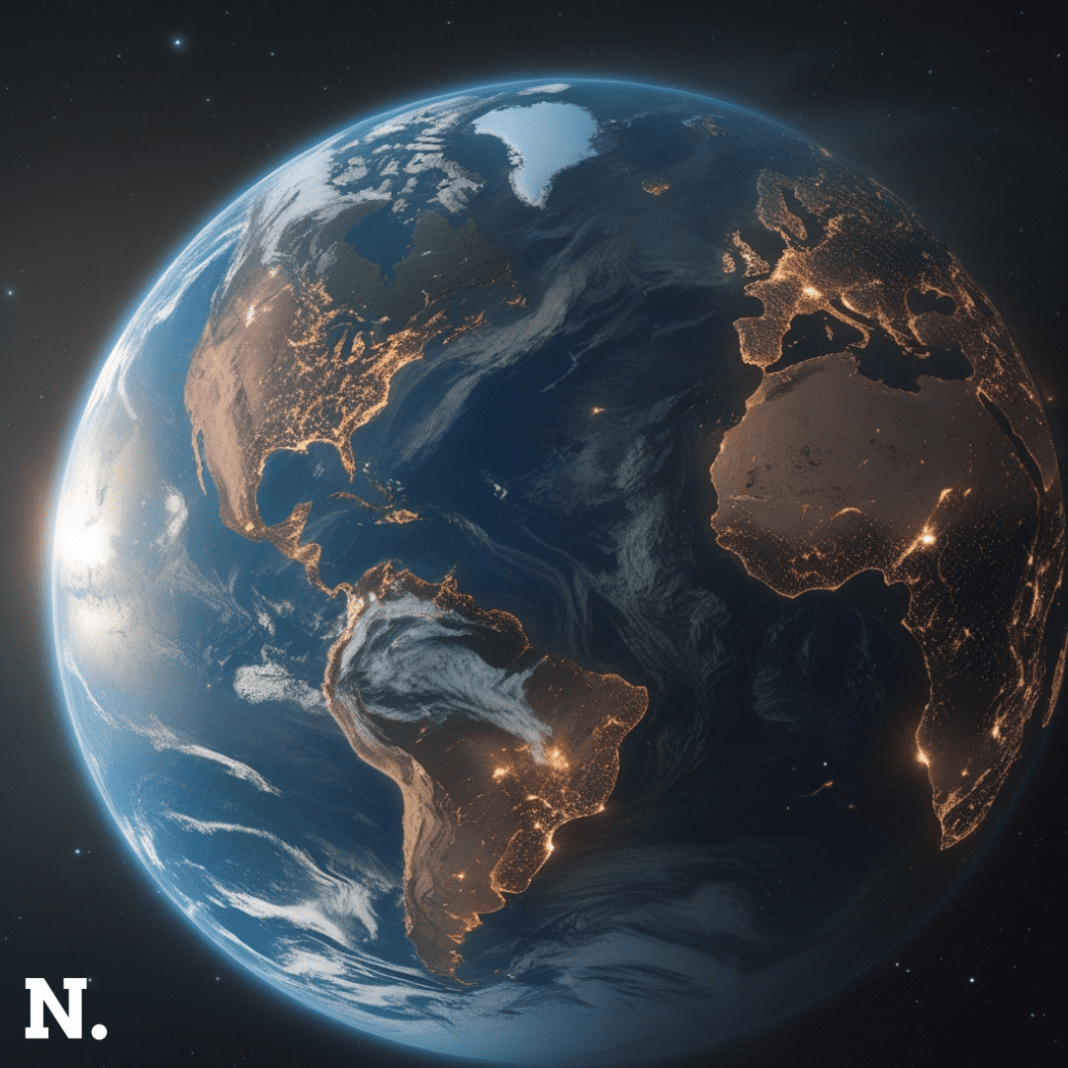A Blue Planet Changed in Plain Sight
In 1972, humans captured a photo of Earth that would become one of the most famous images ever taken. Known as the “Blue Marble,” it showed our planet in full view from space for the very first time. It was a glowing blue and white orb floating in the darkness, full of life, colour, and beauty. This image made people realise just how small and delicate our world really is.
Fast forward 50 years, and the Earth doesn’t look quite the same anymore.
A new version of the Blue Marble was taken in 2022. This time, it wasn’t snapped by astronauts with a camera in hand but by a satellite a million miles away. This new image shows us the big changes that have happened to our planet since that first photo. The differences are hard to miss. Many of them are signs of climate change – changes that have been happening fast and are now clearly visible from space.
Ice Melting and Deserts Growing
One of the biggest changes seen in the new image is the shrinking of the Antarctic ice sheet. In 1972, thick white ice covered much of the bottom part of the Earth. Now, it’s noticeably smaller. This is because the Earth is getting warmer, and the ice is melting faster than it used to. This is not just happening in Antarctica. Snow and ice are disappearing in other cold places, too.
Earth’s Magnetic Shield: Protecting Us from the Sun’s Fury
Meanwhile, the Sahara Desert has been growing. More and more land is turning dry and brown instead of staying green and full of trees. The rainforest in Africa is moving further south as the dry land takes over areas that used to be rich with plants and animals. From space, you can see less green in these areas and more yellow and brown.
The change in vegetation is not just in Africa. All around the world, forests are being cut down or lost due to fires, farming, and construction. This shows up clearly in satellite images. Places that used to be green now look dry, dusty, and bare. The Earth is slowly losing its leafy cover.
Brighter Nights and Busier Days
Another thing that’s changed in 50 years is how bright parts of the Earth have become. While the Blue Marble images are taken during the day, other satellites have looked at Earth at night. What they show is a planet glowing with lights. Cities have grown, and more areas are lit up by streetlights, buildings, and homes. Places that were once dark are now bright spots on the Earth’s surface.
Oceans Heating at Record Speed Threaten Ecosystems
Urban sprawl – when cities grow and spread out – is also easy to see. There are more buildings, roads, and developed land than ever before. This kind of human activity leaves a clear mark when you look at Earth from far away.
Even the oceans show signs of human influence. Satellites can detect lights from ships moving across the seas. There are more ships now than 50 years ago. These moving lights are signs of how busy our oceans have become. In many areas, large wildfires can even be seen from space, glowing bright and covering huge parts of land. The number of these fires has doubled in just the last 20 years.
A New View of the Same Blue World
Today’s Blue Marble image is much more detailed than the one from 1972. The satellite that took it can see many things at once – clouds, pollution, even the number of leaves on trees. Scientists use this information to understand what’s happening to Earth in real time.
In both the old and new photos, the clouds still swirl and dance over oceans and forests. But the patterns have shifted. Rainforests still form clouds, but their reach is shrinking. The connection between land and sky is clear: when we lose trees, we lose clouds and rain too.
Though it’s still beautiful, the Earth in 2022 tells a different story than it did in 1972. The Blue Marble now shows a planet that is being changed by the people who live on it. And these changes, seen clearly from space, are not just surface-deep.





